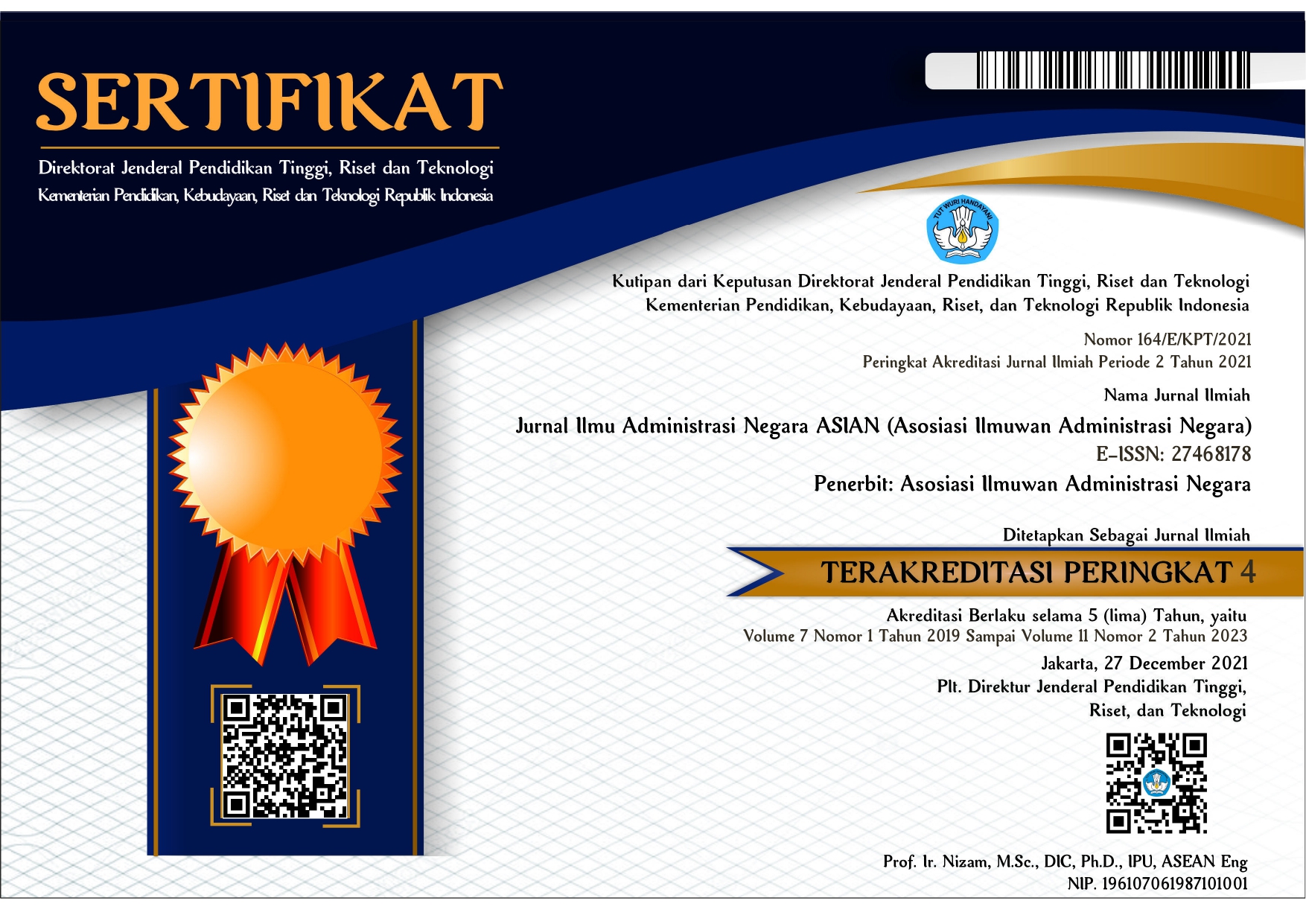Implementasi Kebijakan Pengentasan Kemiskinan Melalui Program Bedah Rumah
Studi Kasus di Kecamatan Loloda Utara Kabupaten Halmahera Utara, Maluku Utara
 Abstract views: 648
,
Abstract views: 648
,
 PDF downloads: 758
PDF downloads: 758
Abstract
Along with decentralization, poverty alleviation efforts are not only the responsibility of the central government but also the local government by presenting various policies. One policy that is considered to empower the community is the policy of poverty alleviation through home surgery program conducted by North Halmahera District Government precisely in North Loloda District. The purpose of this research is to analyze the implementation of poverty alleviation policy through home surgery program. The results of this study show the implementation of the home surgery program is not in accordance with the program objectives and expectations of the program itself, this is seen from: First, the lack of communication or socialization directly to the community about the home surgery program. Secondly, the manpower who used to make the house is a Civil Servant who certainly has no expertise in working and making homes and budgets that are not available in the North Halmahera District Budget in 2011 and part of the budget is collected of the contributions of certain parties. Thirdly, local governments do not have a commitment in terms of honesty and democratic, wherein the implementation of programs in the field there are still jobs that are not on the target program and there is injustice in determining target families. Fourth, the implementation of the program is not in accordance with the mechanism as expected because the project of home surgery program is not planned and planned in the Regional Budget in 2011, also some of the funds collected from non-governmental organizations and Civil Servants and labor in use work is a civil servant.
Downloads
Authors who publish with this journal agree to the following terms:
1. Copyright on any article is retained by the author(s).
2. The author grants the journal, right of first publication with the work simultaneously licensed under a Creative Commons Attribution License that allows others to share the work with an acknowledgment of the work’s authorship and initial publication in this journal.
3. Authors are able to enter into separate, additional contractual arrangements for the non-exclusive distribution of the journal’s published version of the work (e.g., post it to an institutional repository or publish it in a book), with an acknowledgment of its initial publication in this journal.
4. Authors are permitted and encouraged to post their work online (e.g., in institutional repositories or on their website) prior to and during the submission process, as it can lead to productive exchanges, as well as earlier and greater citation of published work.
5. The article and any associated published material is distributed under the Creative Commons Attribution-ShareAlike 4.0 International License









